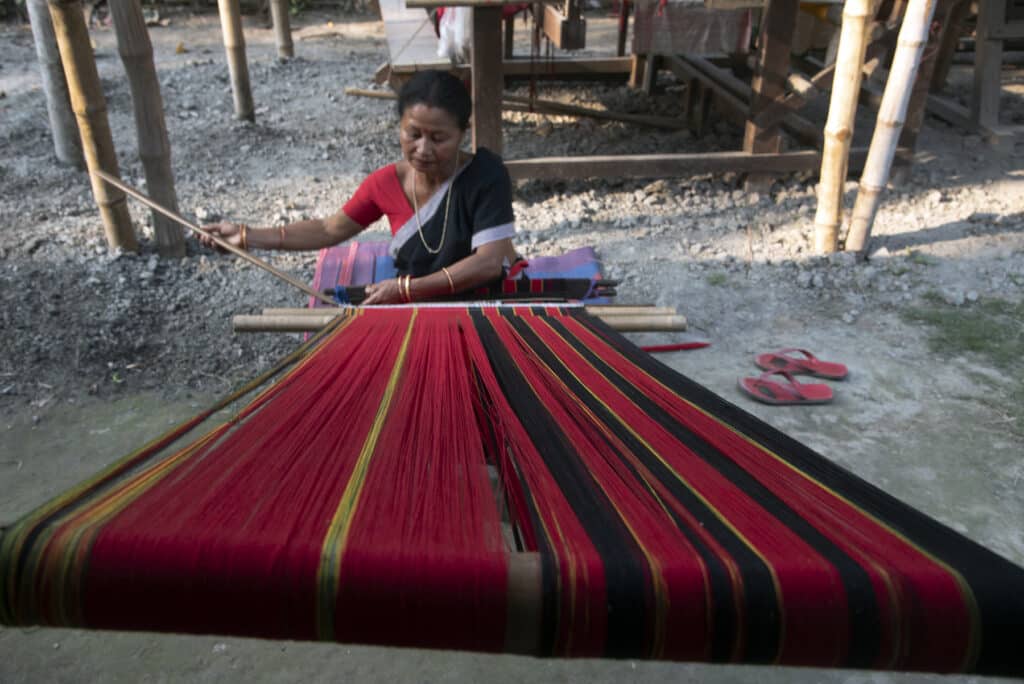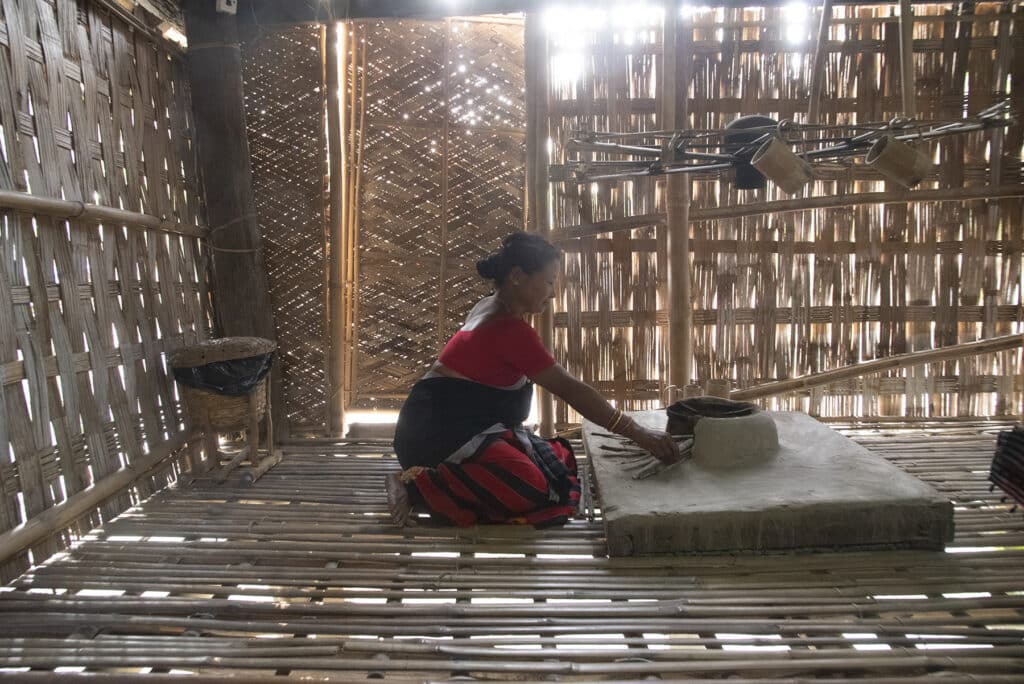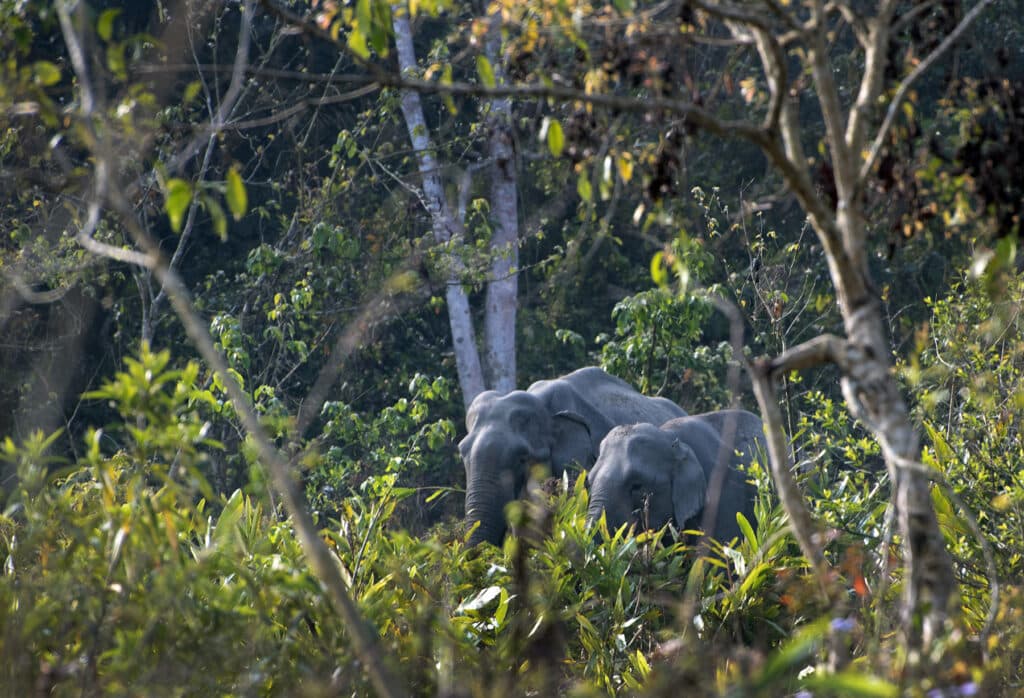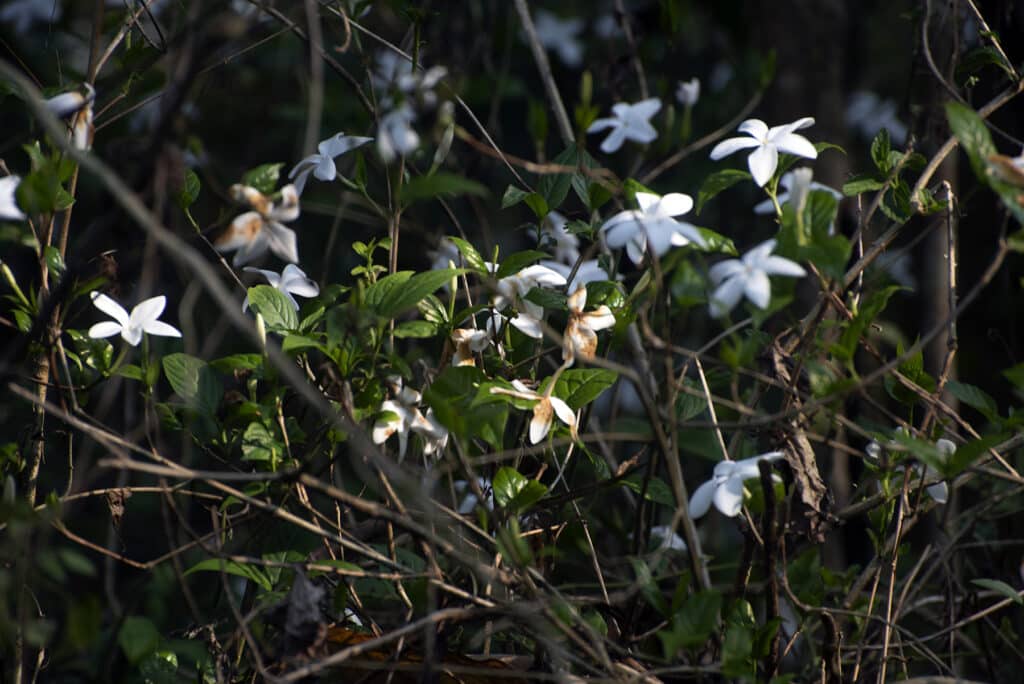Wild Mahseer of Assam: In Harmony with Nature
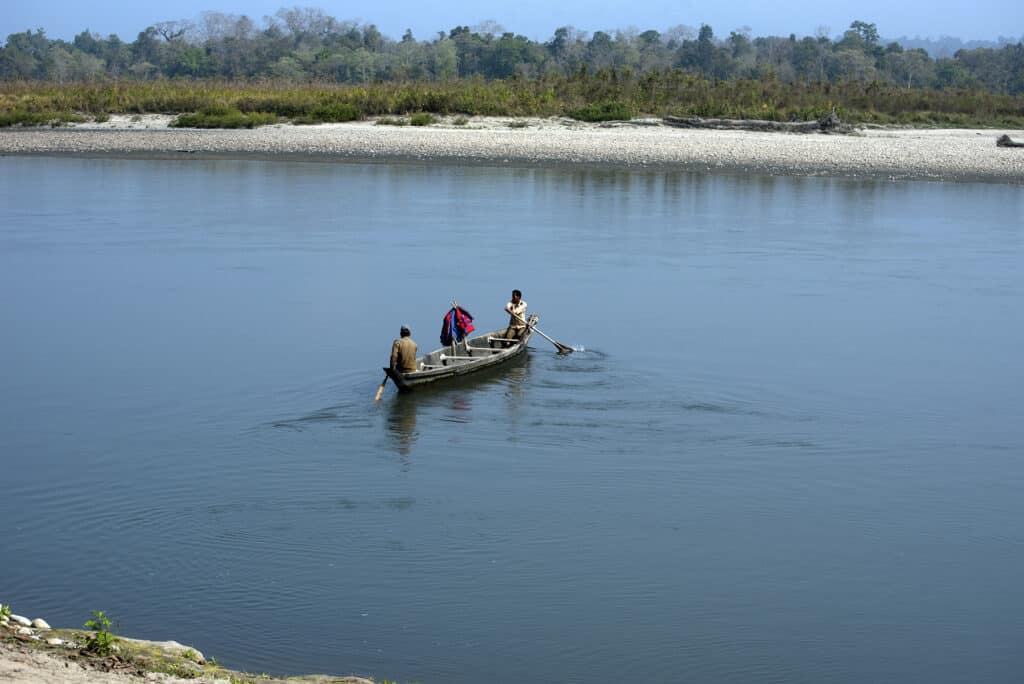
“Embrace, feel and be happy,” a soft whispering voice breaks the spell as I stand amazed and mystified in the dense forest of the Eastern Himalayan Botanic Ark of Wild Mahseer, Assam, now glowing in the warmth of the first ray of the morning sun. I turn back and find Sushil, the curly-haired guy from Mishing tribe pointing to a tall, dark tree. “Go and hug it,” he insists. I put my arms around the tree and stand quietly. The woody fragrance makes me calm and I feel rejuvenated. Sushil Nagte is a native environmentalist of Wild Mahseer, the colonial bungalow cluster where I have been stationed for three days to explore the wilderness of Central Assam.
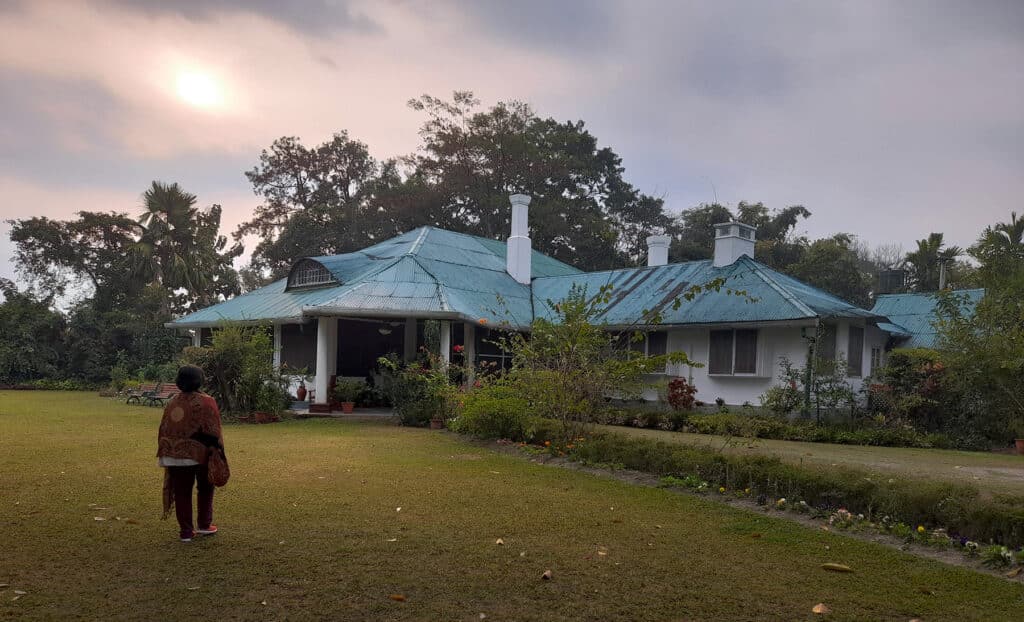
Blessed with serenity and tranquility, Wild Mahseer, named after one of the toughest game fishes, offers unique natural and cultural experiences to visitors. Spread over 22 acres of land, the heritage bungalows with antique furniture and colonial décor provide the opportunity to relive history and it is a perfect place to re-establish your lost bonding with nature.
As I wander through the shadowy leafy trail of the Botanic Ark, Sushil informs me how he and his team members from Balipara Foundation have planted saplings in the dusty parking lot of the erstwhile tea planter’s bungalow. “We nurtured them and Nature did the rest. The results are before you.” Sushil’s bright eyes glitter as he runs his fingers through the bark of red cotton that he has reared with much care. “Our Ark, once the barren parking space, is the abode of birds, butterflies and reptiles. Nature is the best architect, you know.”
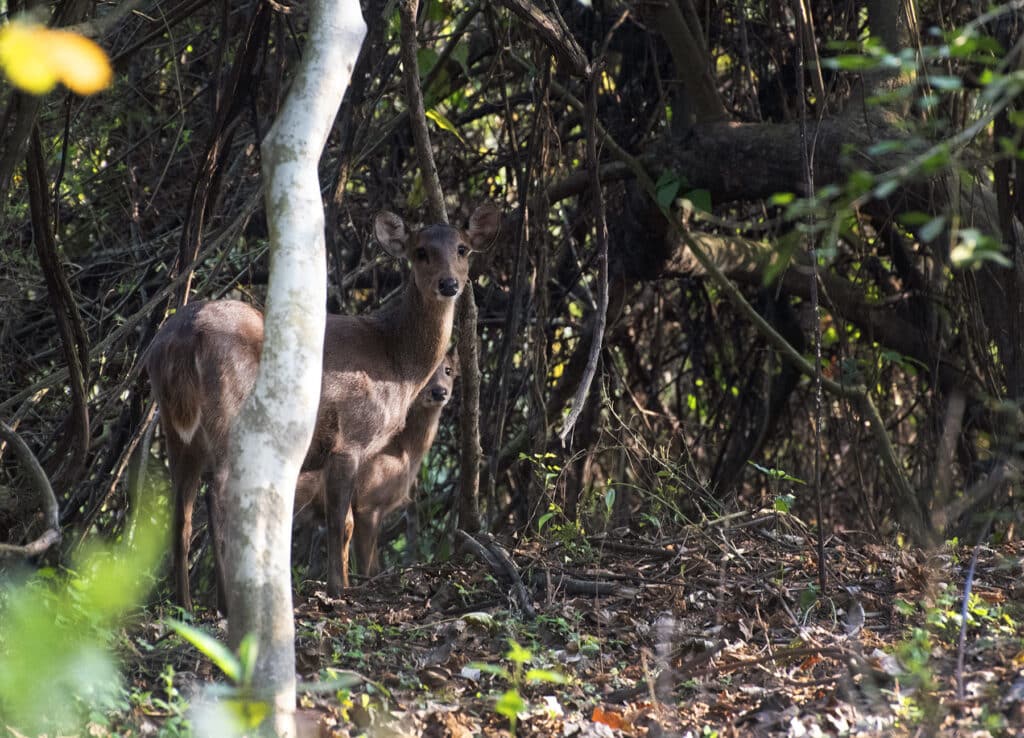
Three days earlier, the 5-hour drive from Guwahati, the capital of the state of Assam, past dry farmlands and patches of tea plantations had reached me to Wild Mahseer, late in the evening. Mr. Munish, the white-haired, ever-smiling manager of the heritage retreat and his wife Arunima helped me with an itinerary that would take me into the nuanced folds of Wild Mahseer and some of the treasures of this region.
The next morning, Sengelimari Garo village, about a 30-minute drive from Wild Mahseer, was my first pitstop. Colourful houses peeped from behind the bamboo thickets stretched all over the village. A middle-aged Garo woman greeted us with her charming smile. “Our ancestors came here long ago to work in the fields almost 200 years ago. We have been here ever since”. She took me around her modest homestead beautifully decked up with seasonal flowers, enlightened me on their women-only self-help group MASK, a centre for women empowerment, showed me the handmade products ranging from shawls to pickles and talked about their endeavour to look for markets to sell those products.
After a little while, a traditional lunch was served on a banana leaf. Local rice with lentil soup, farm-fresh vegetables, fish fry, and chicken curry made with rice powder along with chicken pickle (shredded chicken boiled and mixed with spices). It was a sumptuous affair and I kept on helping myself with the wonderfully tangy chicken pickle that tickled my taste buds.
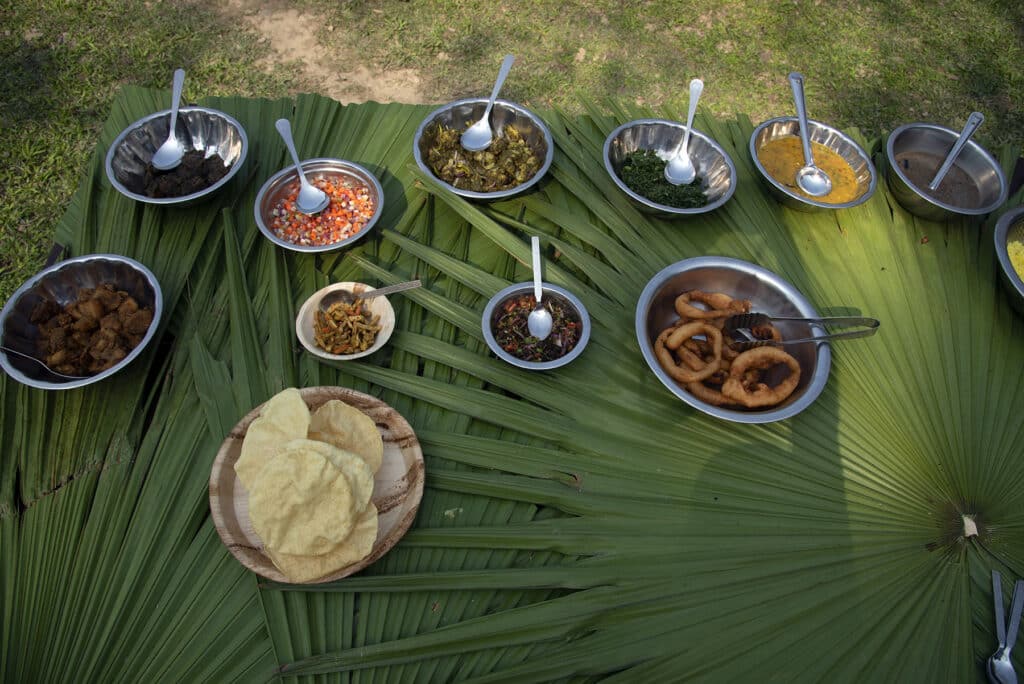
My next venture was Nameri National Park, a short drive of 16 kilometres from Wild Mahseer. Nameri is the only national park in India that allows visitors to enjoy a 5-kilometre circular walking trail under the strict supervision of a forest guard. A small country boat ride across the quaint and serene Jia Bhoroli River took me inside the pristine world of Nameri National Park. The walking trail through the deep and dark forest of towering, moss-covered tropical vegetation is home to hundreds of species of birds that include the globally threatened white-winged ducks and Rufous-necked hornbills. Colourful wings flew in and out of the forest glade, as Sushil wonderfully mimicked bird calls so that we could catch a glimpse of the feathered beauties venturing out of their shelter in the bushes. Multicolored butterflies accompany us throughout our journey.
The next morning started with a trip to the Kaziranga 6th Addition, a virgin forest on the north bank of Brahmaputra River. It is still not on the bucket list of the world’s wildlife enthusiasts and we were left to ourselves to savour the wilderness in a 4×4 vehicle. Though the famous kaziranga elephants eluded us, we got a fleeting glimpse of a herd of swamp deer as they crossed the jungle tract, a hog deer and her calf gave us inquisitive looks from the cover of a red cotton tree and we spotted a lone buffalo and a solitary rhinoceros, quite absorbed in themselves. On the way back, we stopped at Mishing village, another tribal hamlet near Wild Mahseer. The village chief greeted us cordially and narrated the history of their tribe, and we next visited one of the traditional stilt houses, where I tried my hands at the traditional handloom. The evening ended beautifully with a quiet stroll on the banks of Jia Bhoroli, serenely winding its way behind the village.
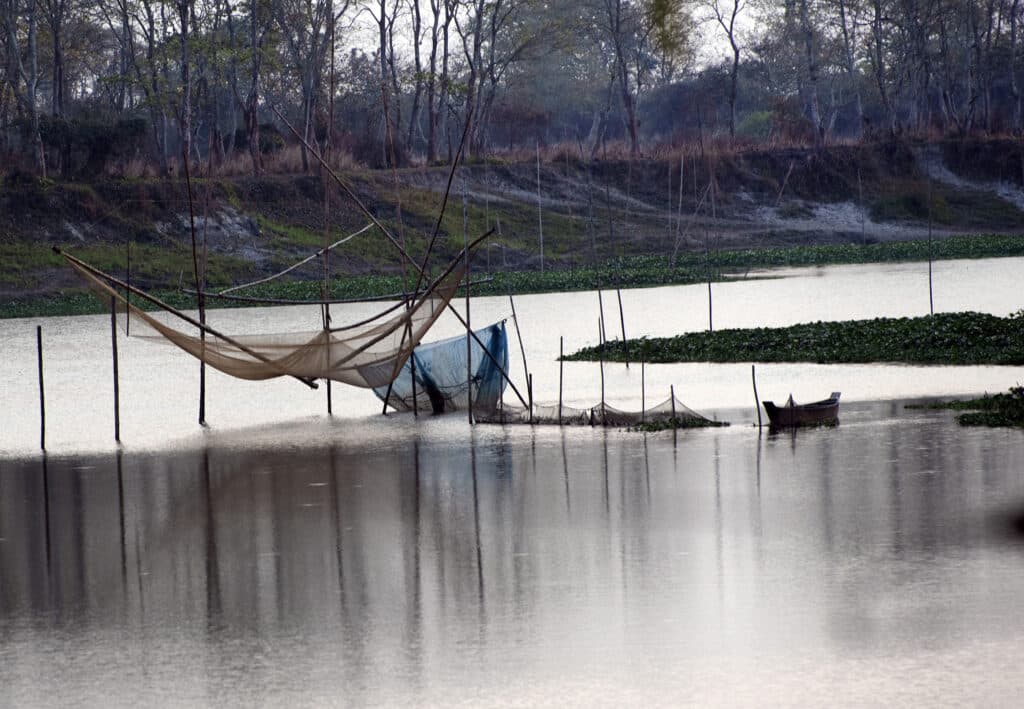
This morning, my delightful tryst with Wild Mahseer concludes at the Eastern Himalayan Botanic Ark. “We have more than one lakh trees here, in this Ark.” Sushil tells me as our walking trail comes to an end, lakh meaning a hundred thousand. After a hearty breakfast, my car rolls out of the main gate leaving behind the colonial bungalows and past the community kitchen called Belaghar where the resident cook and his family rustles up authentic North Eastern cuisine for the guests.
The home journey begins, and in another few hours I would be back to my city life but I know I will have to come back to Wild Mahseer to immerse myself again in the loving lap of nature.
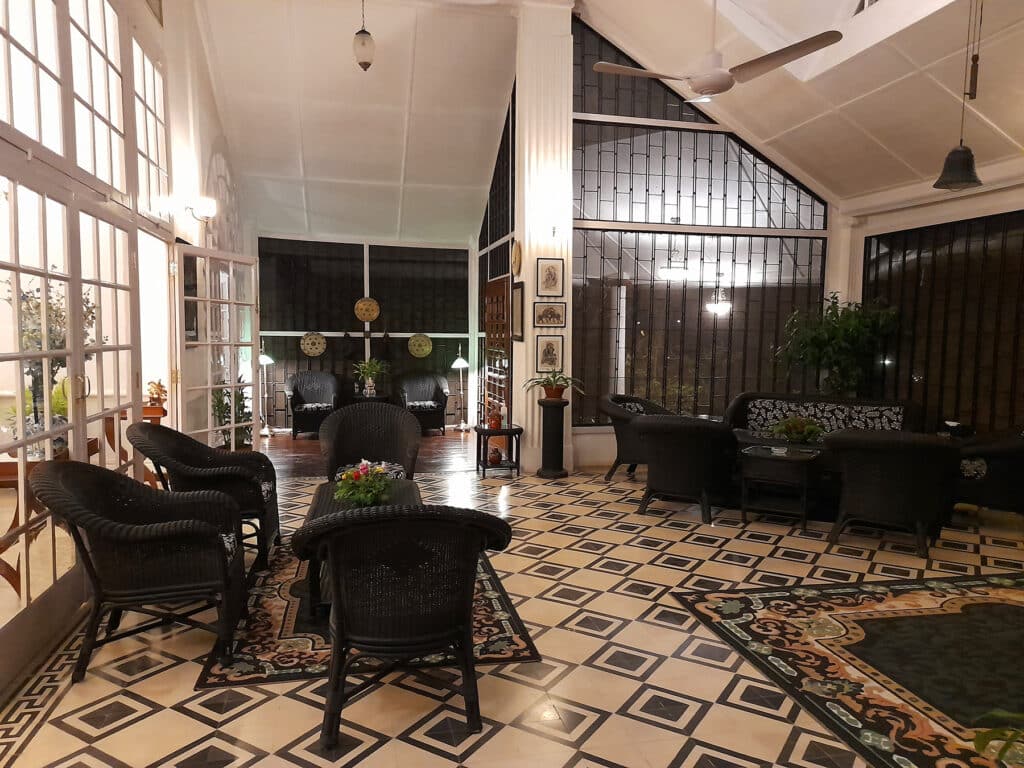
Book Your Stay Near Wild Mahseer, Assam
Search, compare and book hotels & rentals at the best prices that are sourced from a variety of platforms including Booking.com, Hotels.com, Expedia, Vrbo and more. You can move the map to search for accommodations in other areas and also use the filter to find restaurants, purchase tickets for tours and attractions and locate interesting points of interest!


A Kolkata-based teacher, Bandita Mukherjee is an avid traveller. In her pursuit to dig deep into the diverse landscapes, cultures and customs, she has visited 18 countries and counting. But while she is thrilled to hike unknown terrains, explore cities steeped in history and understand the culinary scene of every new place she travels into; the nuanced textures of her native India is what she finds most exciting as a compulsive traveller. When she is not teaching or on-the-go, she can be found making her next trip plans, with a mug of fresh Darjeeling tea and her pet cat curled up by her side.
